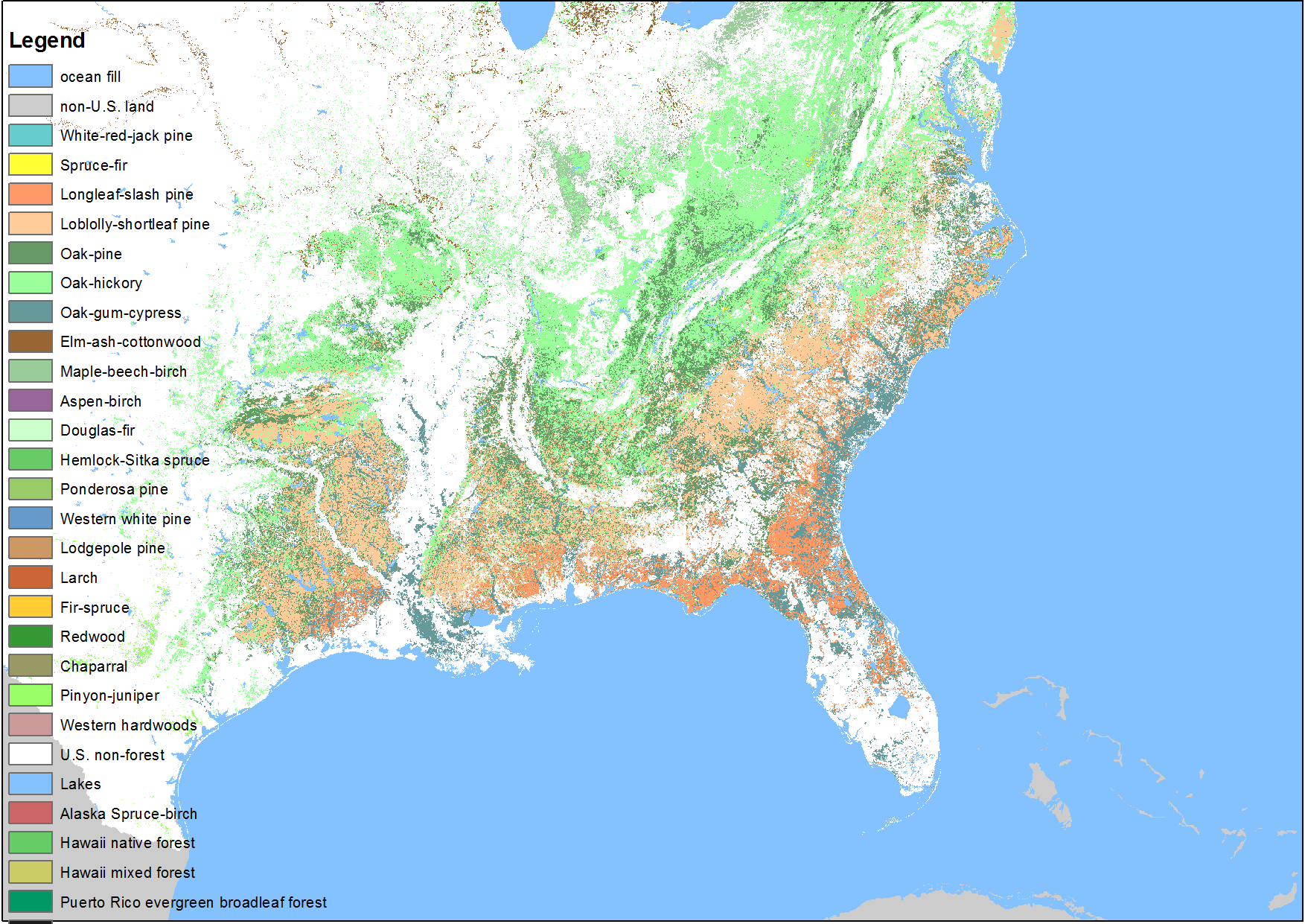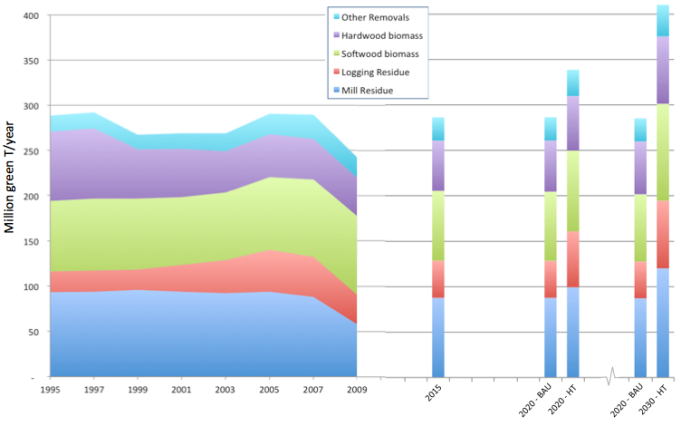General description of US Southeast case.
Forest area in region concerned : 100 million ha
Total population : 322 million
Total GDP 18 trillion dollar
Biomass and bioenergy feedstock
These concern primary forest residues, other removals, secondary residues;
Figure 1: Forest types of the US Southeast

Source: USDA Forest service fia.fs.fed.us
Note: The total forest area is some 100 million ha. Brownish/pink colors are the longleaf-slash pine and loblolly-shortleaf pine plantations, covering close to 30 million ha.

Historical and projected future total biomass availability
Source: own elaboration
Key sustainability issues
Biodiversity conservation is considered the primary practical barrier to sustainable biomass supply from the study region.
To evaluate the sustainable potential available for export, we apply three layers of spatial constraints to the technical potentials to protect areas and habitat types of high biodiversity value. These are:
- Protected areas, areas identified as having special conservation significance, private lands covered by conservation easements, or areas classified as wetlands or other water bodies[i].
- Other set-aside areas of special biodiversity concerns as per the rarity-weighted species richness index[ii].
- A partial set aside based on forest types of the US Southeast. In particular, the exclusion of gum-cypress, and a 10% exclusion of oak-pine forest types.
The three spatial constraints mentioned above overlap to a significant extent, but each also covers areas that are not otherwise excluded
Bioenergy policies
Pellet production is considered a GHG saving technology and stimulated in the US. Large scale producing plants have been built and are in operation. The infrastructure of harvesting, collection, processing and shipping is in operation and logically developed in this region which has been under active forest management for a long time. Some decline in pulp& paper has been filled in by pellet plants. Main concerns are biodiversity concerns and the low level of internationally recognised certification.
[i] Galik, C. S., Abt, R. C. (2015). Sustainability guidelines and forest market response: an assessment of European Union pellet demand in the southeastern United States; GCB Bioenergy (2015), doi: 10.1111/gcbb.12273
[ii] NatureServe (2013). NatureServe Rarity-Weighted Richness (RWR) Model of Critically Imperiled and Imperiled (G1 or G2) Species in the United States. Arlington, VA. U.S.A.
